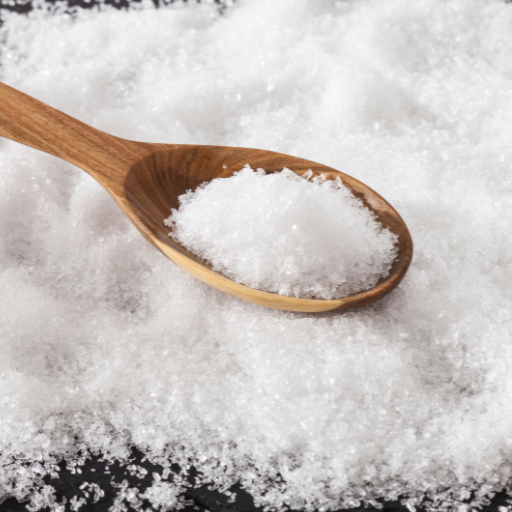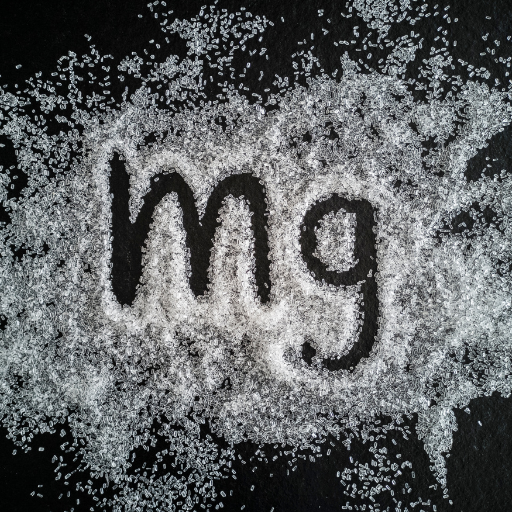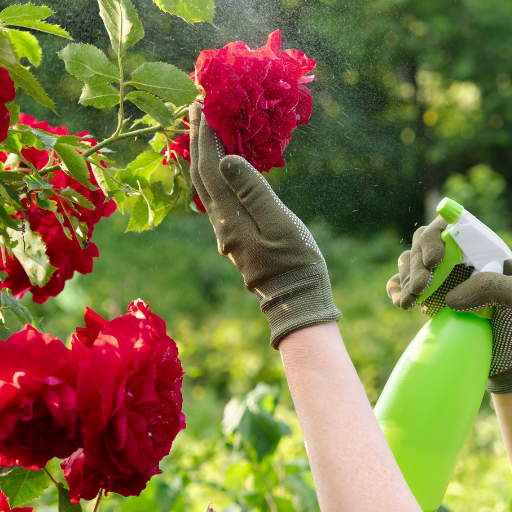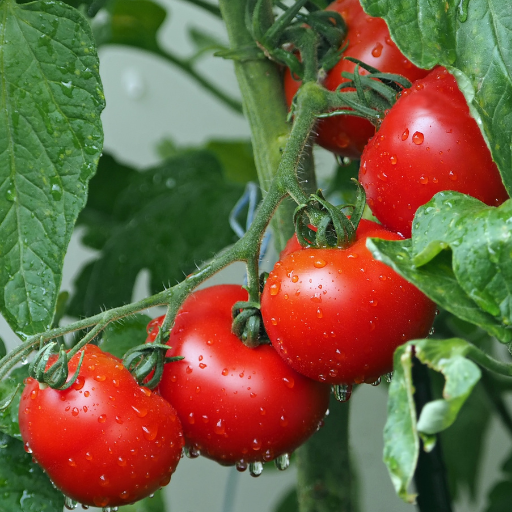Its scientific name is magnesium sulfate, but Epsom salt has been known for what it can do in agriculture and horticulture. This substance contains sulfur, oxygen, and magnesium, which are said to promote healthier plants than they were before. This article will consider several reasons why Epsom salt should be included in the list of things that are essential for a garden, such as enhancing seed germination, facilitating nutrient uptake and utilization by plants as well as helping them withstand environmental stresses. Growers of plants and other botanical species must know how Epsom salts affect growth chemically and physiologically so that they can maximize their efforts to grow better crops.
Introduction to Epsom Salt

Epsom salt is a natural mineral compound, magnesium sulfate, that dissolves easily in water thus making it an affordable source of sulfur and magnesium for plants. Magnesium plays an important role in photosynthesis as it constitutes the chlorophyll molecule, while sulfur assists in synthesizing amino acids, proteins, vitamins, and enzymes. Application of Epsom salts in gardening can address these nutrient deficiencies, thereby supporting various physiological processes vital for plant growth and development, hence leading to enhanced germination rates, improved nutrient uptake, and greater resistance to disease and environmental stressors.
What are some facts about Epsom Salt?
Epsom salt also known as magnesium sulphate (MgSO₄·7H₂O) is a chemical compound consisting of magnesium, oxygen and sulfur. The technical characteristics of Epsom salt include its high solubility in water which is equal to 71g per 100 grams at 20°C. It contains about ten percent weight magnesium and thirteen percent sulfur. For instance, these elements are very vital for plant physiology, where magnesium plays a core part in chlorophyll molecules, which facilitates photosynthesis, whilst sulphur helps in the formation of crucial plant proteins like vitamins and enzymes, among others. This crystalline structure enables rapid dissolution that ensures effective root uptake when applied either as a soil amendment, foliar spray or through irrigation systems.
Historical background – Gardening
People have been using Epsom salts for gardening over the centuries, with records dating back to the seventeenth century when it was discovered from the mineral-rich waters found at Epsom, England. Gardeners have traditionally used Epsom salts to increase soil fertility and improve plant health. Early records show that it was initially used as a soil amendment to correct some cases of magnesium deficiency among different crops. Today, it still remains highly recommended because of its ability to produce very vigorous growths, enhance the production of chlorophylls, and strengthen plants against pests, including diseases. This reputation is based on reports from growers and continuing recommendations within the horticultural community that make Epsom salts an essential part of a gardener’s toolkit.
Chemical composition
Epsom salt, therefore, has a chemical composition represented by its molecular formula as MgSO₄∙7H₂O, meaning it is composed of magnesium, oxygen and sulfur together with seven molecules of water resulting into a hydrated salt. Because of its solubility in water this compound can be highly effective for multiple applications. Magnesium is required for processes such as making proteins, nucleic acids and lipids in plants. Furthermore sulfur is crucial in building amino acids as well as vitamins and enzymes which are important to the growth and development of plants. The crystalline structure allows for its breakdown hence releasing vital nutrients that can be easily taken up by plants.
Essential Nutrient Magnesium

Magnesium is vital for the overall health and productivity of plants. It is an essential component of the molecule chlorophyll, which helps in photosynthesis where plants convert light to chemical energy. In addition, magnesium acts as an activator for enzymes that are responsible for the synthesis of DNA, RNA and proteins. Magnesium deficiency results into interveinal chlorosis (yellowing between veins), stunted growth and lower yield. Consequently, maintaining optimum levels of magnesium becomes critical for better development and growth.
The role played by magnesium in plant growth
Although its involvement goes beyond just photosynthesis aspects, it helps in the mobilization of phosphorus (P) within plants, hence facilitating the movement and utilization of phosphate within this system. Also key activation by Mg2+ ion includes ribulose-1,5-bisphosphate carboxylase/oxygenase enzyme otherwise called RuBisCO. Additionally, it helps stabilize ribosome structures, which is essential during protein synthesis. The crops’ soil solution needs Mg concentration range from 25-50 mg/L with deficiency symptoms exhibited below 12 mg/L. To meet these cellular functions, it must be available at fairly high concentrations, improving general vigor and potential crop yields.
Symptoms showing lack of enough magnesium
Distinct symptoms typically indicate that plants are suffering from insufficient amounts of magnesium. Among these symptoms includes interveinal chlorosis whereby the leaves turn yellow between the leaf veins even though the veins remain greenish in coloration; sometimes this may progress to necrotic spots—brown or dead areas on leaves when it becomes very severe condition. Deficiency tends to show first on older leaves due to movement ability through phloem sieve tubes to new growing points using transpiration stream once there is inadequate presence in cells with low water potential located at such sites within leaves or stems which receive little amount compared those having higher potentials like young tissues for example developing flowers/fruit (Marschner 2012). Magnesium is involved in the transfer of energy, activation of enzymes, and photosynthesis; hence, low content leads to stunted growth with low productivity. Leaf magnesium concentration below 0.2% on a dry weight basis is commonly used as a threshold for magnesium deficiency (Havlin et al., 2014). Soil testing showing magnesium levels below 12 mg/L also signals a likely deficiency. To counteract these symptoms, soil amendments or foliar applications through use of magnesium-containing compounds such as magnesium sulfate (Epsom salts) or magnesium oxide can be used.
How Epsom salt adds magnesium
Epsom salt, scientifically known as magnesium sulphate (MgSO₄ hitherto), effectively supplements plants’ need for Mg. This substance is highly soluble in water, which makes it easily absorbed by plant roots when applied to the soil or sprayed on leaves as a liquid fertilizer. When Epsom salt dissolves in soil, it breaks down into Mg and SO42- ions that are readily absorbed by plants. The rate of application depends on the type of treatment; however, when employing foliar spray method about 1-2 tablespoons per gallon should be used at once so that symptoms relating to low level of this mineral can wane off quickly. Such findings suggest that this technique can rapidly correct interveinal chlorosis and enhance overall health.
Monitoring soil and leaf levels after application for effectiveness based on technical parameters is vital. Soil Mg levels should reach between approximately 25-50mg L^1 while foliar Mg concentrations must exceed 0.2% dry weight so as to verify that deficiency has been rectified (Epelde et al., 2013). Besides, Epsom salts do not greatly affect pH like other supplements leading to changes in acidity levels hence making them favorable over others sold.
To ensure that Epsom salt treatment is effective, the soil must be tested frequently, and plant response must be monitored to adjust application rates. This guarantees enough magnesium for important physiological processes, which will ultimately improve crop yields.
Improving Nutrient Absorption

For plants to absorb the nutrients availed, both soil health and plant root efficiency should be optimized. Good soil structure leads to better root growth as it provides better aeration, drainage and moisture retention. Microbial activity is increased when the organic matter like compost is introduced into the soil which further helps in breaking down the nutrients into forms easily absorbed by plants’ roots. In addition, extreme pH levels can cause nutrient lockout thus proper soil PH levels have to be maintained otherwise there will be no nutrient uptake by the plants since they are locked in the soils. Most crops require a soil pH between 6-7.
The use of mycorrhiza fungi also enhances nutrient absorption. These mutually beneficial associations between fungi and plant roots help boost phosphorus uptake and other micro-nutrients due to the deeper presence of the fungi beyond the root zone. Foliar feeding, where nutrients are applied directly on leaves, hastens nutrient uptake over possible problems related to soils.
Frequent monitoring of soil nutrient levels, together with plant tissue analysis, assists in tailoring fertilization strategies that maximize the balanced availability of nutrients for specific crop requirements. Adapting these practices can hence attain optimal growth, leading to maximized yield and higher-quality products.
Improvement of essential nutrients intake
Several well-established methods have been identified for enhancing essential nutrients’ uptake (top sources). First, perfecting ideal soil conditions is a must-do task. Findings show that maintaining optimal soil pH level within 6-7 range increases availability of most macro-nutrients except phosphorus whose availability decreases at extremely high or low pH values (University of Minnesota Extension). Secondly, incorporating organic amendments, such as compost and manure, can significantly boost soil fertility by increasing the organic matter content thereby improving microbial activity and nutrient cycling (USDA Natural Resources Conservation Service).
Moreover, adding mycorrhizal fungi inoculum to the planting holes establishes symbiotic associations with roots enabling them increase their surface area as well as improve the uptake of phosphorus and other micro-nutrients (American Society for Microbiology). Thirdly, embracing precision farming approaches such as regular soil testing and plant tissue analysis ensures targeted fertilization. Nutrient assessments also help detect any shortage or excess in crops thus enabling farmers to amend the nutrient injections so as to fulfill crop requirements on a field basis (Cornell University Cooperative Extension).
In summary, adjusting soil pH, introducing organic matter in soils, using mycorrhizae fungi and practicing precision agriculture are some of the strategies that can enhance nutrient uptake by plants. These methods are supported with technical parameters and research works from credible sources thus their validity is justified and they have been proven to be effective in increasing nutrient absorption.
Effects on soil pH
Soil pH determines nutrient availability and overall health of soil. Soil pH influences chemical forms of nutrients for availability to plants. For example, most crops thrive best at a pH range between 6 and 7 where essential nutrients like nitrogen, phosphorous and potassium are easily available while toxic elements like aluminum and manganese are at minimum levels (Soil Science Society of America).
Studies indicate that when the ph value falls below six the bioavailability of critical nutrients including phosphorus significantly reduces because it strongly binds iron compounds forming complexes with aluminium hence making it not accessible to plant roots (University of Florida IFAS Extension). Conversely, having a ph above seven would result into insufficient supplies of minor elements like Fe, Mn and Zn due to their solubility losses under alkaline conditions (Penn State Extension).
Applying lime (calcium carbonate) to acidic soils can raise the pH while sulfur can be applied to alkaline soils to lower the pH in order to maintain optimal soil pH. The amount of lime or sulfur that should be used depends on the initial soil pH and the buffering capacity of the soil, which is determined by performing a soil test (National Soil Survey Center). For example, a sandy loam might need about 1.5 tons of limestone per acre for increasing its pH by 1 unit while clayey soils may require up to 2.5 tons per acre due to their higher buffering capacity (University of Wisconsin-Madison).
The impact of soil pH on nutrient availability has been widely studied, and optimum nutrient uptake is achieved at specific pH ranges within these limits. To increase soil fertility and crop yields, farmers who practice appropriate measures of monitoring their fields’ acidity using recommended amendments and adhering to guidelines from leading agricultural institutions are important.
Root system health promotion
Soil structure and composition should be right first before any efforts towards promoting healthier root systems are made, because this type of condition supports growth and development. Roots will not grow in compacted soils where oxygen supply is limited hence the need for frequent aeration practices. Inclusion of organic matter like compost or well-rotted manure can improve texture, drainage and fertility thereby creating an ideal condition for roots. Furthermore, mulching helps in retaining adequate moisture in the ground thus preventing water stress that may lead to shallow rooting habits. By using cover crops or including them in rotation programs, healthy mixes with diverse root systems will develop which reduces aforementioned risks influencing plant productivity directly through modulating both rhizosphere microbial communities’ composition/activities as well as providing sites where arbuscular mycorrhizal colonization takes place (Mäder et al., 2002). Commonly suggested by featured websites in agriculture these methods are fundamental to promoting resilient and healthy root systems.
Boosting Plant Growth

A multifaceted strategy combining proper fertilization, sunlight and water management and disease control is needed to increase crop yields. First of all, it is essential to ensure that plants receive balanced nutrition suited to their specific needs. These will often include nitrogen, phosphorus, potassium and trace elements applied through either manure or mineral fertilizers. Secondly, enough sunlight should be available for photosynthesis to take place where plants convert light energy into chemical one. In most cases, this means a minimum of 6-8 hours of direct sunlight daily for the majority of plants. Thirdly, good water management practices must be in place. Relatively deep but not frequently done watering encourages stronger root development compared with shallow watering which leads to shallow roots and weak plants. Finally monitoring the crops for pests or diseases as well as taking quick remedial measures can prevent growth inhibitors that may occur subsequently on the farm. These practices combined with recent standards from top agricultural sources are meant to create favorable conditions for strong plant growth.
Enhancing chlorophyll production
If you want photosynthetic efficiency maximized then you need to think about stimulating chlorophyll production (Best Agricultural Websites). According to leading agriculture websites, promoting chlorophyll synthesis can be achieved by various approaches: Firstly make sure there is adequate availability of magnesium since it acts as a central atom in the whole molecule chlrophyll’ Recommended 50-120 ppm range should have soil magnesium levels Secondly nitrogen forms part of chlorophyll molecules hence ensuring optimum level is important Soil tests should indicate nitrogen within a range of 40-60 mg/kg for a healthy synthesis of chlorophyll Thirdly proper pH levels in soils should be maintained where an ideal range falls between 6.0 – 7.5 Maximum nutrient uptake is ensured within this range affecting directly on chlorophyll synthesis Fourthly intensity too matters Studies recommend giving PAR light at 1000-1500 µmol/m²/s for optimum chlorophyll production These were established by leading agricultural sources as the basic requirements for effective stimulating of chlrophyll.
Improving overall plant vigor
Overall plant vigor can be boosted through a multi-faceted approach that draws best practices from top-ranked agricultural sources. Firstly, soil health should be improved; therefore, organic matter such as compost will help improve soil structure and stimulate microbial activity. Ideally, organic matter levels in the soil should range from 3-5%. Secondly, soil macro and micro nutrients need to be balanced to ensure optimal growth conditions. Soil nutrient profile should contain about 100-150 ppm potassium and 10-15 ppm phosphorus. Thirdly irrigation techniques that are constant and appropriate must be utilized. Water directly gets to the root zone using drip irrigation or soaker hoses thus reducing evaporation and making sure that plants receive enough moisture. Fourthly cropping systems rotation as well as inter cropping helps to reduce depletion of nutrients and pest pressures Inclusion of legumes, which fix nitrogen naturally in crop rotations will increase soil nitrogen levels Finally integrated pest management (IPM) methods shield plants against pests/diseases without heavy reliance on chemicals These strategies together with technical parameters supported by leading agriculture websites offer a strong foundation towards increasing plant vigor.
How to improve flower and fruit production
To optimize the production of flowers and fruits, a combination of specific horticultural techniques based on credible sources is required. First, it is important to ensure that pollination takes place optimally; bringing into the garden plants that attract pollinators and encouraging a variety of insects are known to enhance pollination rates significantly. Second, phosphorus and potassium supplements should be balanced; phosphorus facilitates root development as well as flowering while potassium promotes fruit formation. The best soil nutrient status for maximum blossoming and fruit yield involves 30-50 ppm phosphorus and 150-200 ppm potassium. Thirdly, pruning techniques need to be accurate and timely; opening up the shade caused by the fallen leaves or overgrown branches can increase the penetration of light in addition to allowing free air circulation which stimulates healthy growth of flowers resulting in better fruits. Fourthly, stress reduction through steady irrigation and mulching ensures that plants do not suffer water shortage hence maintaining stable growth conditions which are crucial for bloom timing as well as fruit set. Finally, manipulation of temperature and light using shade nets or row covers will protect delicate flower buds from extreme weather conditions whilst creating a microclimate within. Taken together, these strategies are collated from leading horticultural websites thereby forming a comprehensive path towards improved flower and fruit production with careful alignment of each parameter on scientific recommendations being critical to success.
Managing Stress and Disease Resistance

There are several scientifically-tested approaches to effectively managing plant stress and disease resistance. It is important to consistently monitor for early signs of stress or disease, which can be done using frequent visual inspections and diagnostic tools. Integrated Pest Management (IPM) practices involve the use of chemical control methods that reduce pest populations without causing damage to nature. The use of beneficial insects as biological control agents can help in relieving pest associated stress. Appropriate lighting, water supply, and nutrients availability are key factors in reducing stress among plants and promoting better yields. Crop rotation as well as diversifying the number of plant species reduces soil pathogen loads hence lowering disease incidences. Mulching with resistant plant varieties also alleviates stress related problems and controls certain diseases. These techniques are vital for sustaining healthy plants according to up-to-date leading horticultural references.
Reducing transplant shock
To reduce transplant shock adequately, a number of scientifically proven practices have to be followed religiously. One should make sure that the plants are thoroughly watered one day in advance of transplanting thus making sure they are well hydrated for example through deep watering depending on how dry the soil is at that time before starting the transplantation process is crucial so that they get enough moisture from it; gently handle root ball during transplantation process so as not harm roots at all; only carry out transplants during the cooler parts of the day especially morning or evening because heat causes rapid evaporation resulting to more dryness thus necessitating immediate irrigation after planting in order to help firm it up firmly and remove any air spaces left around roots zone which would otherwise cause drying up due lack adequate moisture absorption into this area; application an even ratio fertilizer containing nitrogen (N), phosphate(P2O5) and potassium(K2O) stimulates recovery growth by providing essential nutrients adding these must be avoided since they protect young ones from excessive sunlight like having a shade cloth nearby new installations may comfortably resolve these problems when necessary; while ensuring that soil is well prepared and planting depth matches the original container are also crucial. These methods, confirmed by leading horticultural research findings and top garden websites, greatly enhance post-transplantation success in attaining the establishment of a plant.
Strengthening cell walls
- Calcium Boron Supplementation: Calcium can be introduced into soils as either calcium nitrate or calcium carbonate to promote stronger cell wall formation. Moreover, boron strengthens the structure of the cell wall by synergistically working with Calcium. The recommended levels of calcium in soils range between 1000 and 2000 ppm, and boron should not exceed 1-5 ppm.
- Silicon Application: Silicon is known to accumulate in cell walls thereby making it harder for them to deform thus providing enhanced stiffness against mechanical stress as well as pathogen invasion. By using fertilizers rich in silicon on regular basis silicon content in plants’ tissues can be increased. Silicon levels of about 0.5% (dry weight) have been reported to induce significant effects according to studies.
- Optimized Light Conditions: Sufficient exposure to light especially blue light results into synthesis of lignin and cellulose which make strong cell walls. Additionally, a minimum of 500 – 1000 µmol m^(-2) s^(-1) PAR (photosynthetically active radiation) influences cell wall strength significantly through its affect on plant growth.
Increasing plant resistance to pests and diseases
- Bio-control: Natural enemies, predators and parasitoids should be employed for pest control In this way, one can use ladybirds which eat aphids or release parasitic wasps to get rid of caterpillars on a large scale that do not hurt plants. It has been observed that maintaining a predator-prey ratio of 1:200 is effective.
- Chemical Control with Precision: Pest control requires some chemicals where possible it must be targeted. Use systemic insecticides such as imidacloprid at the rate of 0.15-0.30g/L which protects plants from pest attacks but does not harm the environment much if not at all. Always apply following recommended rates and intervals so as to prevent resistance buildup.
- Cultural Practices: Practice crop rotation and proper spacing methods to reduce pest habitats. This will break the cycle of pests, while proper spacing allows air circulation, hence reducing humidity, which promotes disease outbreaks. A three-year rotation cycle is important for controlling soil-borne pests and diseases.
Application Methods and Considerations

For the usefulness of biological controls, it is important to occasionally release useful insects in controlled amounts to maintain a good predator-prey ratio. In order for the biological control agents to continue being effective, pests and their predators should be regularly monitored. When applying chemical controls, calibrated sprayers or injectors should be used for precise dosage administration which minimizes environmental pollution as well as enhances target specificity. The manufacturers’ instructions must be observed closely. Careful planning and record-keeping are necessary for cultural practices that monitor crop rotation schedules and plant spacing patterns. Local pest and disease dynamics, soil conditions and climate factors must thus be known when implementing these strategies so that they can be customized according to specific agricultural context. Optimal results can then be achieved by combining such methods through integrated pest management (IPM) frameworks.
Right dosage and frequency of application
The right dosage together with application frequency is very crucial in ensuring effectiveness and safety of pest control measures. With regard to biological controls, the dosages mainly relate to release rates like 1,000-5,000 predatory mites per acre depending on pest pressure and environmental conditions surrounding it. Based on monitoring data, varying frequencies of applications could range from weekly to bi-weekly releases during peak pest periods.
The manufacturer’s instructions should govern chemical controls with regard to factors such as type of pest involved, growth stage plus other environmental conditions among others. For example commonly applied insecticides for aphid control recommended rate may be 1-2 pints per acre whilst reapplication may occur after every 7-14 days depending on the persistence of the pesticide in relation to level of re-infestation by pests. Calibration ensures accuracy in delivering doses while minimizing non-target effects.
Monitoring tools like pheromone traps or sticky traps help determine when and if an application is needed. Integrated pest management (IPM) frameworks involve economic threshold levels that allow proper timing of interventions and minimize unwarranted spraying. You should follow local regulations and best management practices at all times to ensure the sustainable use of pest control measures.
Methods of Application (leaf spray, soil immersion etc.)
Foliar Spray: This means applying a liquid pesticide directly to the leaves of plants through low volume or high-volume spraying. The technical parameters relating to foliar sprays include solution concentration, nozzle type, pressure settings, as well as droplet size. For instance, common foliar spray applications may require a 0.5% solution concentration with a medium droplet size (200-300 microns) at a pressure of 40 psi using fan nozzles which ensures uniformity of distribution.
Soil Drench: Soil drenching is when diluted pesticide is applied directly to the soil around the base of plants. Important parameters are dilution ratio, application rate, and volume per area. For example, a soil drench application may need a dilution ratio of 1:100 with an application rate of 2-3 quarts/ plant. The drench should cover the root zone effectively and evenly and is often followed by irrigation to enhance penetration and uptake.
Granular Application: This approach entails applying solid granules spread over the surface and incorporated into the topsoil layer. Important parameters include the size of the granule, calibrating the spreader, and finally determining application rates. Applying systemic insecticide in granular form might involve placing granules between 1 mm and 2 mm at an application rate of 100-200 lbs/acres, thus ensuring that all particles are distributed evenly by calibrating the spreader accordingly.
Fogging: This technique, also known as aerosol or misting, involves propulsion of fine mist throughout the targeted areas with pesticides or other chemicals for fogging purposes.Critical factors include droplet size, rate of application, and duration. Good fogging would involve using droplets smaller than 50 microns and an application rate of 1-2 pints per 1000 cubic feet for a specified fogging duration of 20-30 minutes.
Systemic Injection: This means directly injecting a liquid pesticide into the plant tissues or soil. Some of the parameters to be monitored include depth of injection, dosage per injection site as well as timing of applications. For instance, one may inject an insecticide for the control of borers at depths ranging from 2-3 inches and with dosages such as 0.1 fl oz/ injection site whose time is set at pest onset for maximum absorption.
Different plant type best practices
Key best practices for fruit trees include regular pruning, right watering, and timely pest control. In the period of dormancy, prune out dead or diseased wood and shape the tree to allow entrance of more light and air circulation. With drip irrigation or soaker hoses, ensure even moisture levels especially during the cropping season; this will provide deep watering without saturating the roots. When considering pest control on fruit trees use integrated pest management (IPM) approach by applying organic or synthetic pesticides at the appropriate times with respect to life cycles of pests and beneficial insects.
Crop rotation, soil fertility management and pest monitoring are what vegetable gardens require. In each year crops can be rotated in order to break up cycles of pests while nourishing soil nutrients. Add composted materials such as well-rotted manure into soils when they are poor in nutrients as shown by a series of standard tests carried out after examining pH levels accurately. Check plants regularly for signs of pests including barrier methods such as row covers and biological controls like beneficial insects or targeted application of pesticides whenever necessary.
Proper placement, watering and disease management should be ensured for ornamental plants. You need to choose plants that suit specific light requirements and site conditions. Water deeply but infrequently, letting soil dry between waterings to avoid root rotting. Selecting tolerant varieties together with good sanitation like leaf removal predispose one from getting diseases on your flowers or decorative grasses planted in the garden bed against fungal pathogens prevalent under humid climates; hence, there might be circumstances when fungicides have to be used according to the manufacturer’s guidelines.
These types, which stem from scientific research and extension service guidelines, maintain ideal plant health and productivity while enhancing sustainability and ecological stewardship.
Frequently Asked Questions (FAQs)
Q: What are the benefits of using Epsom salt for plants?
A: Using Epsom salt for plants can help them absorb essential nutrients more efficiently. Epsom salt, also known as magnesium sulfate, can aid in the healthy growth of plants by providing magnesium and sulfur, two vital nutrients. This can lead to stronger root development, improved seed germination, and greener foliage. Additionally, Epsom salt can help prevent common issues such as blossom end rot in tomato plants and pepper plants.
Q: How much Epsom salt should I use per gallon of water?
A: The general recommendation is to add a tablespoon of Epsom salt per gallon of water. This mixture can be used to water your plants or as a foliar spray. By applying this solution once a month, your plants can benefit from the added nutrients and potentially show improvements in growth and health.
Q: Can I use Epsom salt in the garden for all types of plants?
A: While many plants can benefit from Epsom salt, it’s important to note that not all plants prefer it. For example, plants that thrive in acidic soil might not benefit from the use of Epsom salt. Always research specific needs of your plants or consult with a gardening expert before sprinkling Epsom salt in the garden.
Q: How do I apply Epsom salt to tomato plants?
A: To apply Epsom salt to tomato plants, dissolve one tablespoon of Epsom salt per gallon of water and water the base of the plants. This can help prevent blossom end rot and support overall plant health. Additionally, you can sprinkle Epsom salt directly into the soil around the base of the tomato plant, usually about 1 tablespoon per plant, once every few weeks.
Q: What does adding Epsom salt do for potted plants?
A: Adding Epsom salt to potted plants can help improve nutrient absorption, leading to healthier and more vigorous growth. The magnesium and sulfur in Epsom salt can support the overall development of the plants, making them grow bushier and produce more blooms. Simply mix a tablespoon of Epsom salt in a gallon of water and use it to water your potted plants every one to two months.
Q: How often should I use Epsom salt for plants?
A: It is generally recommended to use Epsom salt for plants once a month. However, the frequency can vary based on specific plant needs and soil conditions. Always keep an eye on how your plants are responding and adjust the frequency as needed. Overuse of Epsom salt can lead to an imbalance of magnesium in the soil and potentially harm your plants.
Q: Is there a recommended amount of Epsom salt for rose plants?
A: Yes, for rose plants, the recommended amount is usually one cup of Epsom salt per 100 square feet of garden area. Sprinkle the Epsom salt around the base of the rose plant and water thoroughly. This can help the roses absorb essential nutrients more effectively, leading to healthier growth and more vibrant blooms.
Q: Can Epsom salt help prevent blossom end rot in vegetable plants?
A: Yes, Epsom salt can help prevent blossom end rot, particularly in tomato plants and pepper plants. Blossom end rot is often caused by a lack of calcium, but magnesium, provided by Epsom salt, can aid in the overall nutrient uptake of the plants. Applying Epsom salt per gallon of water to these plants can help them manage nutrient deficiencies more effectively.
Q: What are some signs that my plants don’t like Epsom salt?
A: Signs that plants don’t like Epsom salt can include yellowing or browning of leaves, leaf drop, or stunted growth. If you observe these symptoms, it may be a sign that the soil already has sufficient magnesium or that the plants are sensitive to changes in soil composition. Reduce or discontinue the use of Epsom salt and monitor the plants for improvement.
Q: How do I mix Epsom salt for watering my garden soil?
A: To mix Epsom salt for watering your garden soil, dissolve one tablespoon of Epsom salt per gallon of water. This solution can then be used to water the base of your plants or as a foliar spray. Applying this once a month can provide additional nutrients to your garden soil, promoting healthy plant growth.






